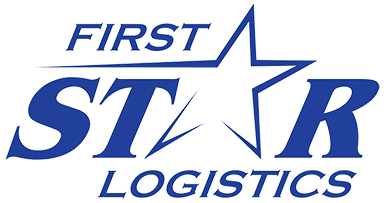The freight market is the space where transporters, brokers, and charterers determine shipping deals. The freight market system is important because it is responsible for the movement of goods throughout the world, and it also creates a large number of jobs. Within the freight market, supply and demand play an important role. The trucking industry is directly affected by the freight market, and 2021 was a volatile year. Let’s reflect upon the freight market and the trucking industry in 2021, examine early 2022 events in the freight market and trucking industry, and look ahead at what may unfold in 2022.
Key Statistics in the Freight Market 2021
In 2021, the size of the freight market in the United States rebounded from the lows seen in 2020. The total market size of freight packing and logistics services reached 2.9 billion dollars, and the total market size of freight forwarding reached over 145 billion dollars. Those numbers are comparable to the pre-pandemic numbers. Prior to the pandemic, freight forwarding market employment in the United States was increasing every year. A downward trend started in 2020 and continued through 2021, in which 359,600 people were employed by freight forwarding brokerages and agencies. Even though the number of employees decreased in 2021, the number of enterprises increased along with the total wage payables of forwarding brokerages and agencies increased to 20.5 billion dollars, exceeding pre-pandemic expenditure amounts. In freight packing and logistics, the number of enterprises and total wage expenditures increased in 2021, to exceed pre-pandemic levels. In long-distance trucking, the market fluctuations trend continued in 2021 with a total market size of just under 221 billion dollars.
Key Events & Trends in the Trucking Industry 2021
2021 was a wild year for the trucking industry that was filled with waves of new COVID-19 variants and corresponding restrictions, a construction and renovation boom, supply chain challenges, driver shortages, and an increase in new truck order cancellations. From 2020 to 2021, national flatbed rates increased by approximately $0.50/mile, reefer rates increased by approximately $0.80/mile, and the number of supply chain disruptions skyrocketed. A 2021 survey among U.S. trucking companies revealed that the greatest market challenge in the trucking industry is driver-related costs, followed closely by insurance costs and liabilities. Shippers reported that their greatest challenge in 2021 was reducing transport costs, followed by finding capacity.
Predictions in the Freight Market 2022
Predictions for the 2022 freight market include rate increases, elongated supply chain challenges and changes, continued shipping bottlenecks, and exciting innovative solutions and industry growth. 2022 will likely experience some of the same challenges as 2021, and include key improvements and innovations. New supply chain capabilities and solutions will likely be implemented to adapt to the challenges presented in 2021. A survey conducted in 2021 showed that most trade and logistics professionals believe that port congestion will unwind in the second quarter or later half of 2022, and 92% of supply chain executives believe visibility is the key to success. Critical technological advancements like cloud connectivity, artificial intelligence, and other digitizations will likely become increasingly important for improving freight and logistic operations.
Early Events & Trends in the Trucking Industry 2022
Like the rest of the world, at the start of 2022, the trucking industry was impacted by the quick and fierce wave of the Omicron COVID-19 variant. Like the tumultuous events of 2020 and 2021, this wave impacted the supply chain and the velocity of transport. However, now that the Omicron variant is subsiding, the future of 2022 is looking bright. The American Trucking Association’s U.S. Freight Transportation Forecast anticipates that freight tonnage will increase by 24% in 2022. This is partly due to the increasing demand for manufacturing, infrastructure investments, new technologies that support drivers and increase safety, and the pressure to raise driver compensation. The supply chain shortages of 2021 raised societal awareness of the importance of trucking and truck drivers. Top trucking industry priorities are driver recruitment and retention efforts that include pay increases, safety improvements, benefit incentives, safety bonuses, and more.
Over the last few years, the freight and trucking industry has experienced many challenges and changes. Overall, the trucking industry has grown substantially. As consumer demand increases and evolves, companies have innovated exciting solutions and growth opportunities. Whether your enterprise is in need of logistics solutions or you are personally interested in joining a growing industry, First Star Logistics may be the partner for you. First Star Logistics is a unique, asset-based global logistics provider, with more than 60 years of experience. For both customers and team members, First Star Logistics provides expert support to ensure success. To partner with one of the fastest growing companies in the freight and trucking industry, contact First Star Logistics today!



